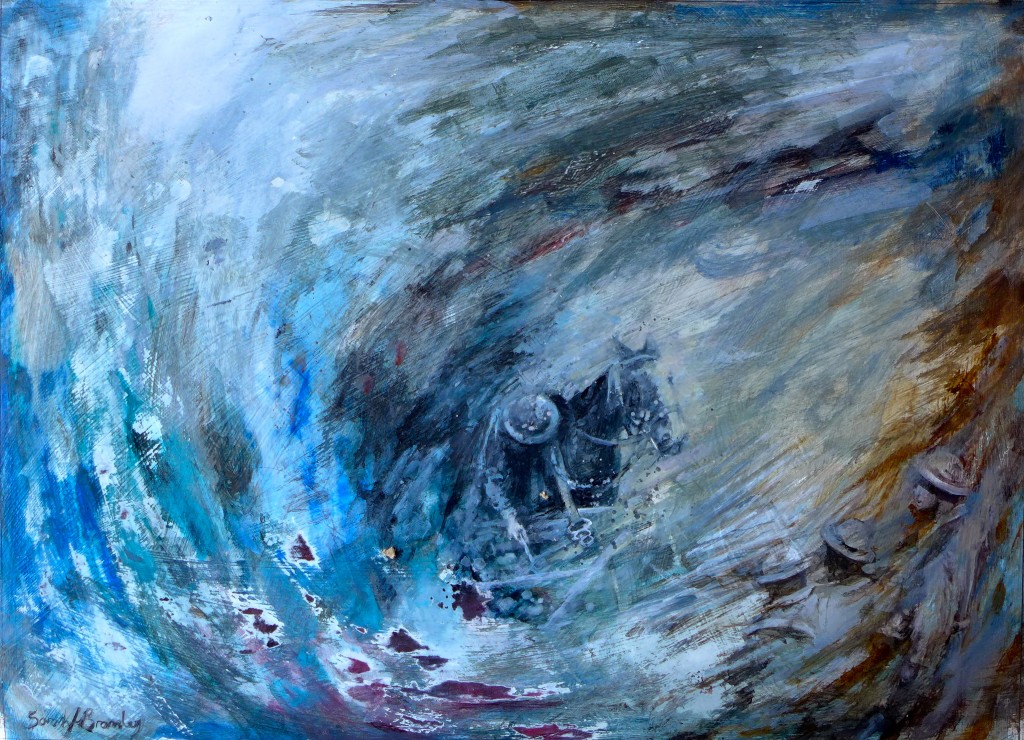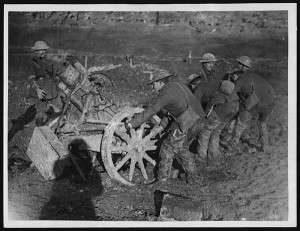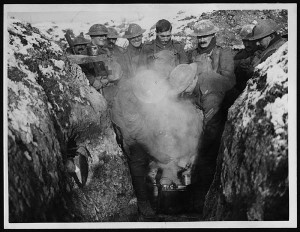In this post I intend to talk about the inspiration behind my WW1 series of work.
I had always wanted to tackle this subject matter, and especially with the Centenary approaching (This was in mid 2013) I thought it would be appropriate to try my hand at this difficult theme.
I was worried as I didn’t wish these pieces to be seen as glorifying war, so I wanted to deal with it in a sensitive manner. A lot of my earlier work involved painting from old black and white photos, which gives free reign with my palette and considerable artistic license. As I addressed in my previous blog post regarding my work process; I tend not to work from life, so using the found images from WW1 as a basis came naturally.
My main goal was to create atmospheric work from my bank of images, sometimes choosing figures from up to 5 different photographs, to keep my source ambiguous. The reason for this was to be able to draw from numerous photos of life in the trenches and on the battlefield. A lot of the recorded photos from the First World War feature very cheery looking soldiers, these images would be sent back to Britain to rally the moral of a nation, and ease worry for those with loved ones overseas. So, for example, I would take a figure from a number of tommies gathered round a cooking pot, another from a group of men struggling to drag a massive gun from the mud, or pouring over a map, and one from a troop of soldiers standing over their dead comrades. This juxtaposition of sources is intentional, and not just compositionally. I want to audience to choose what they see in each painting, and bring their own experiences and emotions to the table. I intend the viewer to project themselves onto the piece, and hopefully be rewarded for their involvement.
Together with the abstract background, which gives greater leave for the imagination, I feel it’s important for the painting to be interesting on a variety of levels. Interesting subject-wise, so the audience can begin to associate their own experiences. Interesting compositionally, so the onlooker can use their imagination and draw their own assumptions. And interesting use of paint, so it’s not just the subject and composition of the painting being the main draw, the application of paint should entice the viewer closer, so (hopefully) they are attracted to the techniques I’ve used to bring together the overall appearance.

Now this is purely what I want from my paintings, I want to be able to love my work, inch by inch, not because it has a face or point of interest, but because I’m especially pleased with how the surface of the painting appears. This sounds horrendously big headed, but I don’t want to be disappointed by something many other people will see and judge me on. It’s important to be proud of your work! The ego of an artist is a fragile thing (or maybe that’s just me..) but I feel art comes from somewhere inside, and when you bare that part of you, any criticism can be taken extremely hard. Which is probably why I hated crits at college! Having a group of peers standing round the sum of a month’s work, and judge it based on it’s appearance? Hard. However sometimes you have to be cruel to be kind, and constructive criticism is one of the things which makes you strive to better yourself. So though it is unpleasant and hard not to take personally, input into your work and its’ direction is pretty invaluable.
On that confusing note! Thank you for reading, and please feel free to ask me any questions if you are so inclined.


